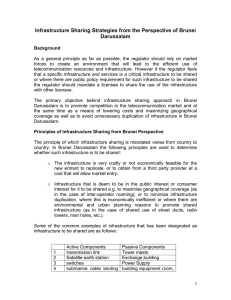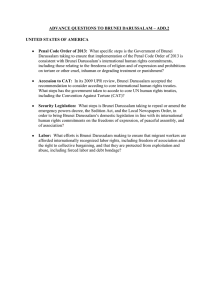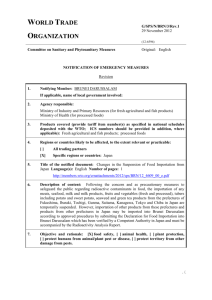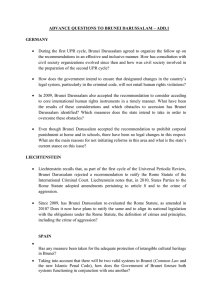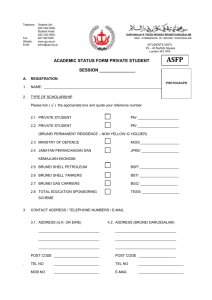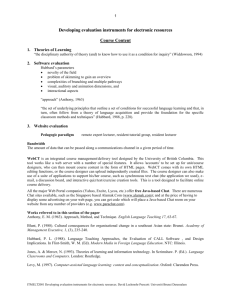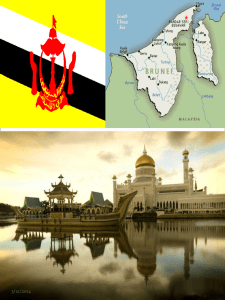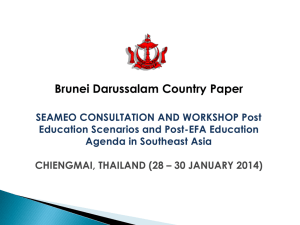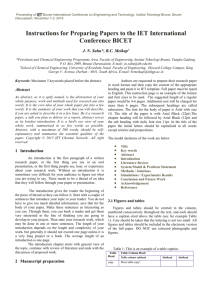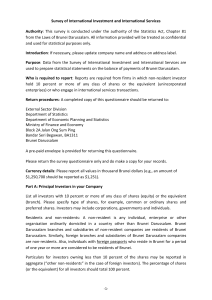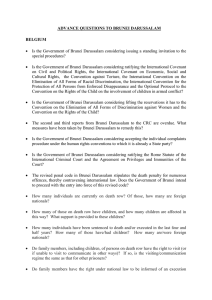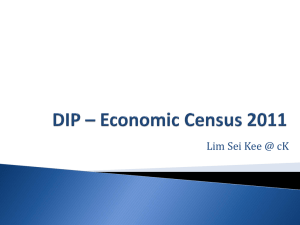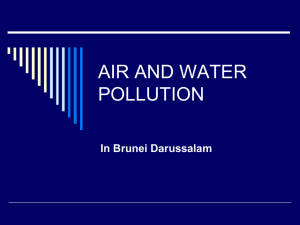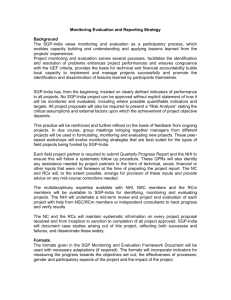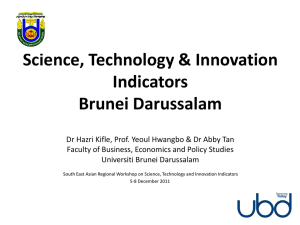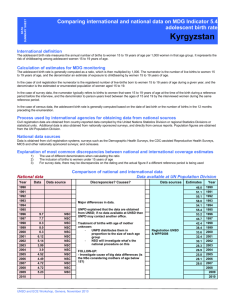wawasan brunei 2035 outline of strategies and policies for
advertisement
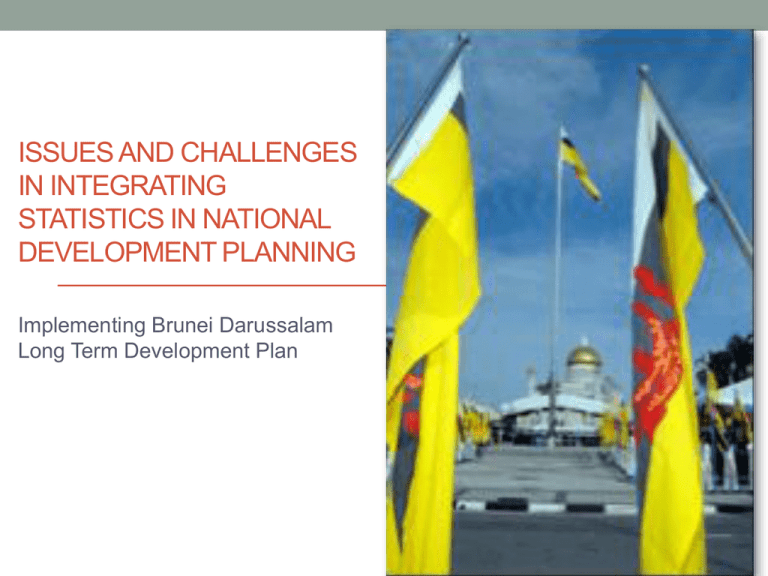
ISSUES AND CHALLENGES IN INTEGRATING STATISTICS IN NATIONAL DEVELOPMENT PLANNING Implementing Brunei Darussalam Long Term Development Plan CONTENTS 1. Introduction 2. Implementing Brunei Long Term Development Plan (LTDP) 3. Implications for Statistics 4. Conclusion INTRODUCTION • Implementation stage of Brunei Darussalam LTDP: • Wawasan Brunei 2035 (30 years) • 3 Outline of Strategies and Policies for Development (10 year each) • Second medium-term plan, 10th National Development Plan • Three levels of information • Long term goals, targets and objectives • Key performance indicators • Measurement indicators & Milestones • Implications to statistics BRUNEI DARUSSALAM LONG TERM DEVELOPMENT PLAN STRUCTURE 3 LONG TERM GOALS BENCHMARK AGAINST INTERNATIONAL INDICATORS 8 DEVELOPMENT STRATEGIES 7 50 POLICY DIRECTIONS NATIONAL DEVELOPMENT PLANS DEVELOPMENT PROJECTS AND IMPLEMENTATION PLANS Mapping the Process of Formulating the Next OSPD and NDP: Methodologies List out the respective input and outcome KPIs for the government organizations 8 2035 Goal Identify the respective government organizations that would be responsible 7 in carrying out the policies and reforms 1 Divide goal into sub-goals Sub-goal 1 Sub-goal 2 Sub-goal n List out the policies and reforms 6 that need to be implemented in order to realize the key areas 2 Set the targets for each of the sub-goals Divide the sub-goals into key areas (2035) 4 Now 3 Set the targets for the milestone (2017) Key area 1 Key area 2 Key area n 5 Set the targets for each of the key areas IMPLICATIONS FOR STATISTICS • Importance of the availability of quality and consistent information and statistical data: • Effective statistical database system • Basic Data and Baseline Information • Benchmarks and Targets • Key Performance Indicators • Early warning system and diagnostics • Manpower availability • Continuous capacity building • Institutional development: • National Statistics Committee (NSC) • International bodies commitment and collaboration • ACSS, IMF, etc. Example of Statistical Data NATIONAL STRATEGIC GOALS No 1 2 Strategic Goals Stable macroeconomic environment Diversified economy KPI (Measures) Target Gross Domestic Product (GDP) Per Capita To be in the Top 10 Income Per Capita Unemployment rate 3 – 4% unemployment rate Inflation rate Below 2% inflation rate Trade balance Trade surplus Contribution to GDP Agriculture, Fishing and Forestry 10 Industry 50% Services 40% Example of Statistical Data 4.4 3.9 2.9 2.5 1.2 -1.4 -2.0 -1.9 -3.0 -3.1 -4.0 -5.0 Source: JPKE 2010 2007 -0.6 0.2 2006 0.0 0.4 2005 0.4 1.0 0.9 0.5 2008 0.5 2.1 1.9 1.5 1.6 1.1 1.0 -1.0 2.3 2.1 1.8 3.4 2011 2.0 2009 3.0 Overall GDP (% change) Non-oil and gas (percentage points, pp) 2.6 2012 4.0 2004 indicators, analyst will be able to identify not only issues but also underlying variables that could measure the importance of policies in addressing issues; • Statistical data should be simple and understandable; Real GDP growth and growth contributions 5.0 2003 • By looking at statistical -1.2 -1.8 -2.2 Oil and gas (pp) -3.7 30 Effective statistical coordination and communication through National Statistical Committee (NSC) • The NSC was established on 1st February 2011. • NSC is a high level forum which comprised of Permanent Secretaries from all ministries in Brunei Darussalam. • The NSC is chaired by the Deputy Minister at the Prime Minister’s Office. 10 Objectives of NSC • To ensure Brunei Darussalam National Statistics is in line with the International Standards; • To set priorities for statistics produced in accordance with the current needs that can be used for planning and policy developments; • To coordinate with the Government Agencies on the collection, compilation and dissemination of statistics; and • To ease and ensure the timeliness of statistical dissemination. Improvements Made Through the NSC • Review of the Statistics and Census Acts; • Human capacity building for all stakeholders; • Developing and implementing MOU’s with non- governmental agencies; • Establishing Statistics Unit in all ministries; and • Coordinate with other agencies in conducting surveys or census. Conclusion • Good statistics and sound statistical analyses assist in providing the basis for the design of policies and plans, monitor policy implementations and implications, achieve issues recognition, evaluate policy impact and forecast the future; and • Evidence based policy making is desirable because it enhances the transparency of policy making and the accountability of policy makers.

